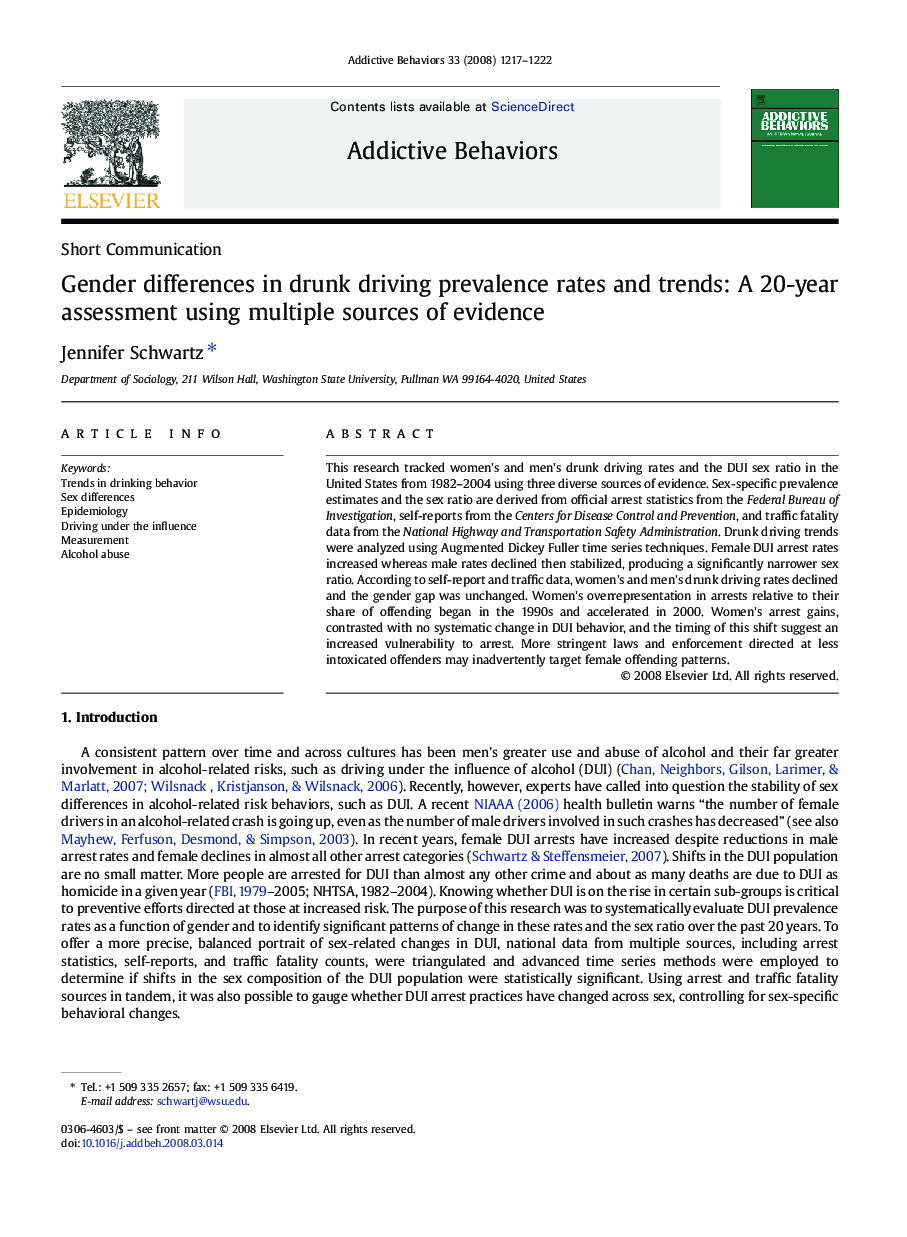| Article ID | Journal | Published Year | Pages | File Type |
|---|---|---|---|---|
| 899771 | Addictive Behaviors | 2008 | 6 Pages |
This research tracked women's and men's drunk driving rates and the DUI sex ratio in the United States from 1982–2004 using three diverse sources of evidence. Sex-specific prevalence estimates and the sex ratio are derived from official arrest statistics from the Federal Bureau of Investigation, self-reports from the Centers for Disease Control and Prevention, and traffic fatality data from the National Highway and Transportation Safety Administration. Drunk driving trends were analyzed using Augmented Dickey Fuller time series techniques. Female DUI arrest rates increased whereas male rates declined then stabilized, producing a significantly narrower sex ratio. According to self-report and traffic data, women's and men's drunk driving rates declined and the gender gap was unchanged. Women's overrepresentation in arrests relative to their share of offending began in the 1990s and accelerated in 2000. Women's arrest gains, contrasted with no systematic change in DUI behavior, and the timing of this shift suggest an increased vulnerability to arrest. More stringent laws and enforcement directed at less intoxicated offenders may inadvertently target female offending patterns.
